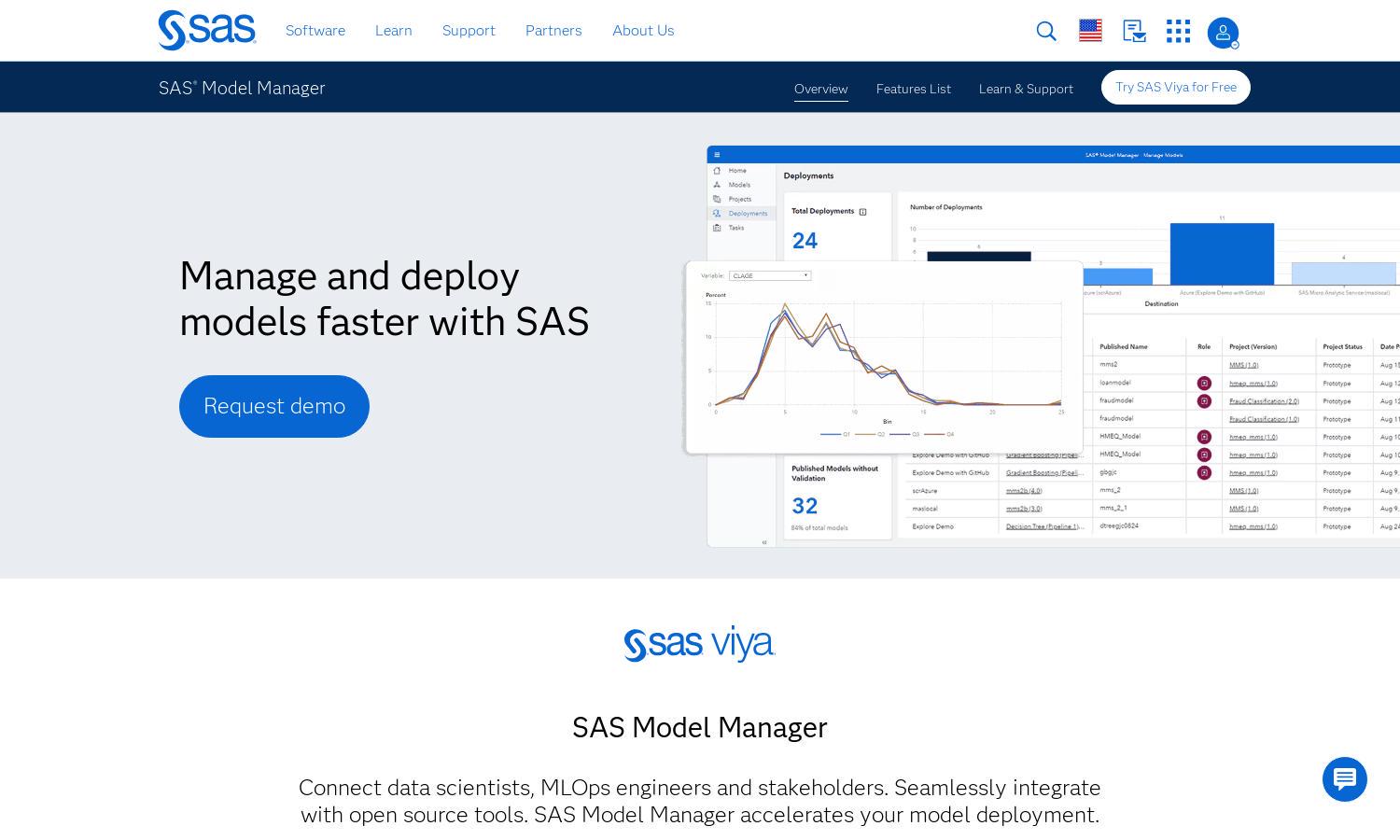SAS

About SAS
SAS Model Manager is designed for data scientists and MLOps engineers to streamline the analytical modeling lifecycle. Users can easily create, validate, deploy, and monitor models in one unified platform. This innovative tool enhances collaboration, increases efficiency, and allows organizations to maintain governance over their AI models securely and effectively.
SAS Model Manager offers flexible pricing plans tailored to various user needs, including free trials and demo requests. Each plan provides innovative features for efficient model management, with tiered pricing that reflects the depth of analytics and governance capabilities, enhancing organizational model deployment and operational efficiency.
SAS Model Manager features a user-friendly interface that simplifies navigation and enhances the modeling experience. With its intuitive layout and seamless integration with open-source tools, users can manage models efficiently, assess model performance, and govern their model assets effectively, ensuring a productive analytical environment.
How SAS works
Users start by onboarding into SAS Model Manager, where they can connect existing models or create new ones. The platform provides an easy-to-use interface for validating models, deploying them across various environments, and monitoring performance in real-time. Features such as model versioning and automated CI/CD pipelines enhance usability, making the analytical process efficient and streamlined.
Key Features for SAS
Automated CI/CD Pipeline
SAS Model Manager's automated CI/CD pipeline ensures seamless model deployment and management. This unique feature allows users to minimize manual tasks, fosters collaboration among teams, and standardizes workflows, ultimately delivering faster and more reliable model outputs while maximizing operational efficiency within their organizations.
Model Validation
One of SAS Model Manager's standout features is its model validation capability. Users can verify scoring logic effortlessly through a no-code interface, ensuring models perform accurately in production environments. This enhances trust in the models deployed, providing reassurance for stakeholders and supporting effective decision-making processes.
Model Monitoring
SAS Model Manager uniquely offers comprehensive model monitoring tools that illuminate concepts like data drift and model decay. Users benefit from ongoing insights into model performance, with built-in alerts designed to inform stakeholders and minimize downtime, ensuring models remain accurate and effective post-deployment.
You may also like:








